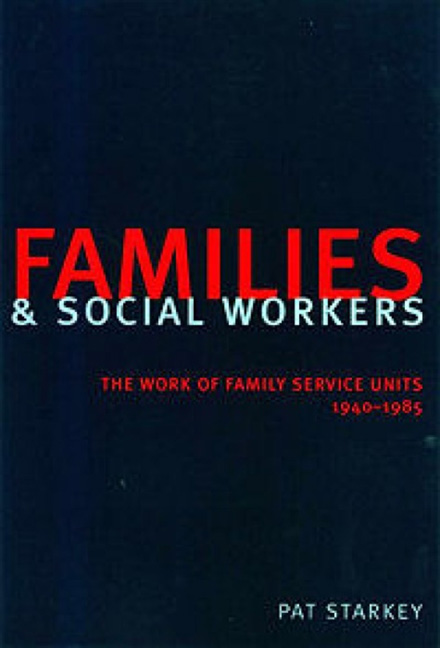Book contents
- Frontmatter
- Contents
- Acronyms and abbreviations
- Introduction
- 1 Pacifist Service
- 2 Problem Families, Eugenics and FSU
- 3 The Growth of a Social Work Agency
- 4 Changes and Adjustments
- 5 Training and Professional Development
- 6 Changing Relationships with the State
- 7 Almost Not An Organisation
- Conclusion
- Bibliography
- Index
7 - Almost Not An Organisation
- Frontmatter
- Contents
- Acronyms and abbreviations
- Introduction
- 1 Pacifist Service
- 2 Problem Families, Eugenics and FSU
- 3 The Growth of a Social Work Agency
- 4 Changes and Adjustments
- 5 Training and Professional Development
- 6 Changing Relationships with the State
- 7 Almost Not An Organisation
- Conclusion
- Bibliography
- Index
Summary
In 1948, FSU enjoyed a number of advantages. It had acquired an enviable reputation as an organisation that had developed particular and useful skills; it had no history to shed; its birth coincided with that of the children's departments and its approach seemed to complement their responsibilities; and it quickly established friendships with people in high places. But the administrative framework it set up, informed in part by an uncertainty about its long-term role, left a legacy of confusion to later generations of workers and committee members.
Discussions about the shape of the organisation had started in 1946 and the ‘shadow’ agency which then began to function consisted of a national committee and a national executive committee. Two local committees undertook responsibility for the Liverpool and Manchester units, which eventually came under the umbrella of the new organisation in 1948. The constitution assumed a permanent two-tier management, with one tier in London and the other in those areas in which units were established. The national committee, with a membership of not less than 7 and no more than 30, was elected at an annual general meeting. National committee powers were delegated to the national executive committee which consisted of the honorary officers (chairman, deputy chairman, honorary treasurer), other members chosen by the national committee, and a representative coopted from each local committee. The national executive committee made decisions about when and where new units should be opened. It recruited and appointed staff, organised the training and deployment of potential caseworkers, and raised funds for use in training and national projects. By the late 1950s, when serious signs of strain first began to appear, the structure had expanded in an attempt to meet the demands of a growing organisation. Provision was made for two fieldwork organisers to attend national executive committee meetings. Two additional national sub-committees were created – personnel, and finance and publicity – appointed annually by the national executive committee. Over the years a number of other committees, for example a research committee and a development and advisory committee, were also appointed. Membership of these committees frequently overlapped. As the organisation became more complex, senior workers in the units began to suspect that they were not properly represented, and that the management structure tended to exclude those responsible for the day-to-day work.
- Type
- Chapter
- Information
- Families and Social WorkersThe Work of Family Service Units 1940–1985, pp. 212 - 246Publisher: Liverpool University PressPrint publication year: 2000



